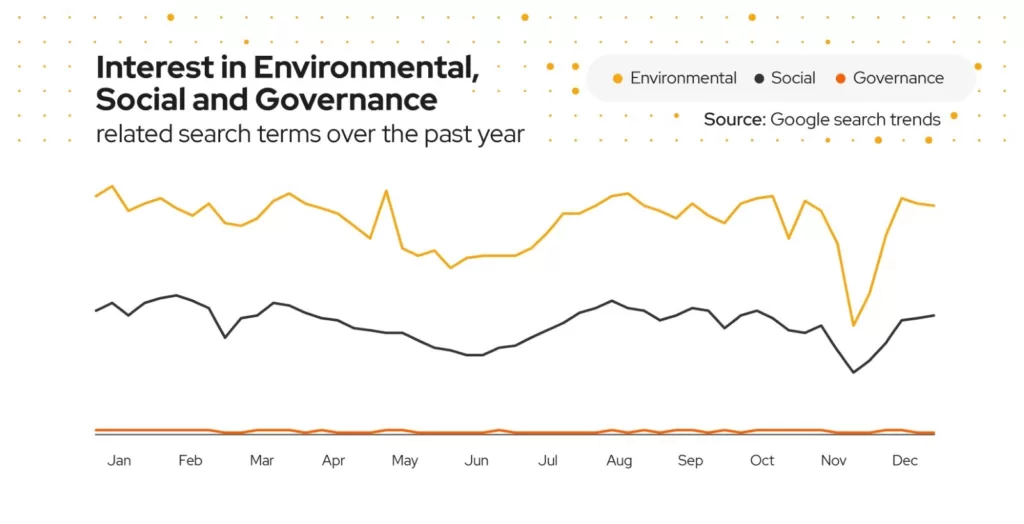
Good governance is important in society’s efforts to make a more sustainable world, but it’s certainly not spoken about at the same frequency as its compatriots – environmental and social impact.

Effective, transparent governance is an integral part of an institution’s commitment to, and strategy around, sustainability.
In the QS World University Rankings: Sustainability 2025, our indicators are grouped into three categories, aligned to the ESG framework: Environmental Impact; Social Impact; and Good Governance. What are the indicators we use to measure governance? How can an institution improve its governance?
Understanding indicators of Good Governance
In the QS World University Rankings: Sustainability, Good Governance is comprised of 10 indicators. With each indicator accounting for 1% of an institution’s score, Good Governance accounts for 10% of an institution’s overall score.
| Good Governance | GG1 | Ethics Culture | Does your organisation support and facilitate a holistic ethical organisational culture? |
| GG2 | Open-Access Publishing | What proportion of your institution’s overall research output is available as open access? | |
| GG3 | Dedicated staff / team for Sustainable Development | Do you have team member(s) dedicated to advancing sustainable development? | |
| GG4 | Transparent financial reporting | Do you publish comprehensive annual financial reports? | |
| GG5 | Student’s Union | Does your institution recognise the democratic voice of its student population? | |
| GG6 | Student Representation in Governance | Does your university’s governing body have a student member? | |
| GG7 | Published governance minutes | Do you publish the minutes of your institution’s regular governance meetings? | |
| GG8 | National Signatory to UN charter against torture | Is your country/territory a signatory to the convention against torture; and a signatory to the elimination of racism?* *or equivalent national legislation | |
| GG9 | Staff perception | Do staff think your university acts ethically in its teaching, research and contribution to society? | |
| GG10 | Policy Citations (Governance) | Are your policies related to SDG 16 (Peace, Justice & Strong Institutions) cited by others? |
To answer these questions, our indicators have sub-metrics, which you can read about here.
Improving good governance
“Good governance may seem like the least direct way to improve your institution’s sustainability initiatives,” Florence Webb, Head of Frameworks at QS, says, “but meaningfully evolving your governance structure has a real impact.”
Making good governance central to a university’s structure and strategy is crucial. Implementing areas of good governance can be a bureaucratic challenge, and making systemic changes in institutions is often challenging.
As with many sustainability initiatives, the broadness of work required can be intimidating. To combat this, Florence recommends breaking down the indicators into four groups:
- Ethical culture
- GG1, GG2, GG3, GG8
- Openness of reporting and research
- GG4, GG7
- Relationship with students and staff
- GG5, GG6, GG9
- Contribution to governance research and policy
- GG10
Creating smaller, focused strategies to improve in these four areas may make improving governance performance feel more manageable.
“Good governance initiatives are outsized in their positive impact on an institution,” Florence adds. “If we use GG9 – Staff perception as an example, there are plenty of non-ranking related benefits to having engaged staff who align, agree and act in accordance with your mission and making the world a better place. The same applies for GG3 – having a dedicated member of staff, or, even better, a whole team to make sustainable development progress has benefits far beyond the QS World University Rankings.”
The importance of measuring governance performance
“Overall, the indicators we use in the QS World University Rankings: Sustainability reflect the reality of good governance, and focus on an institution’s commitment to transparency and accountability,” Ludovic Highman, Strategic Rankings Consultant at QS tells us. “Transparency of key decision-making processes or the ability to be inclusive of all key stakeholders in the decision-making processes of the institution are markers of open and robust governance processes in place.”
For an example of good practice in this area, Ludovic highlights the UK’s University of York. “The composition of the governing body, namely the Council, which is a body which consists of 22 members and of which two are elected student representatives. The University of York ranks number 1 under the Governance category.
“The existence of an elected student union to represent the student voice through a structured and recognized framework is also an important marker of a healthy institution, that promotes dialogue and communication, and should not be taken for granted, as an increasing number of governments, government agencies and the senior management of higher education institutions themselves are banning or undermining student unions in a bid to quell student protest.”
Ludovic notes that transparent and publicly available financial reporting should also be encouraged, “to promote responsible management practices and best practices in good governance”. Effective financial reporting allows internal and external stakeholders an insight into the financial health of the institution, its responsibility with those finances, its income dependencies and its spending priorities.
“For examples of good practice in this area, you may wish to look at the annual reports of the University of Helsinki in Finland (ranked 4 in this category) Lund University in Sweden (ranked 2 in this category), all of which publish comprehensive financial statements,” Ludovic adds.

Belgium’s KU Leuven has a strong ethical culture, with an interdisciplinary Centre for Ethics, several Research Ethics advisory committees, and an overall community engaged with ethical issues inside and outside the institution. This culture is reflected in the elevated scores obtained by the institution in GG1 – Ethics Culture‘s sub metrics and in the overall Good Governance performance. KU Leuven is ranked joint 4.
Is your governance performance not reflected in your ranking performance?
“If an institution’s governance performance isn’t reflected accurately in their ranking, the best course of action is submitting data to us. This ensures we’re accurately representing an institution’s governance performance,” Florence says. “We also know that the process of data collection can help improve standardisation, which has ongoing benefits for institutions.”
Conclusion
Good governance has been recognized as vital if we are all to pursue and meet the UN SDGs. Strong leadership, transparent and evidence-based decision making, democratic and open justice and the willingness to transfer power out of central governing bodies is key to good governance.
By breaking down good governance into more manageable projects, improving your institution’s governance is more than achievable.
Learn more about our suite of solutions to measure and track sustainability performance.



